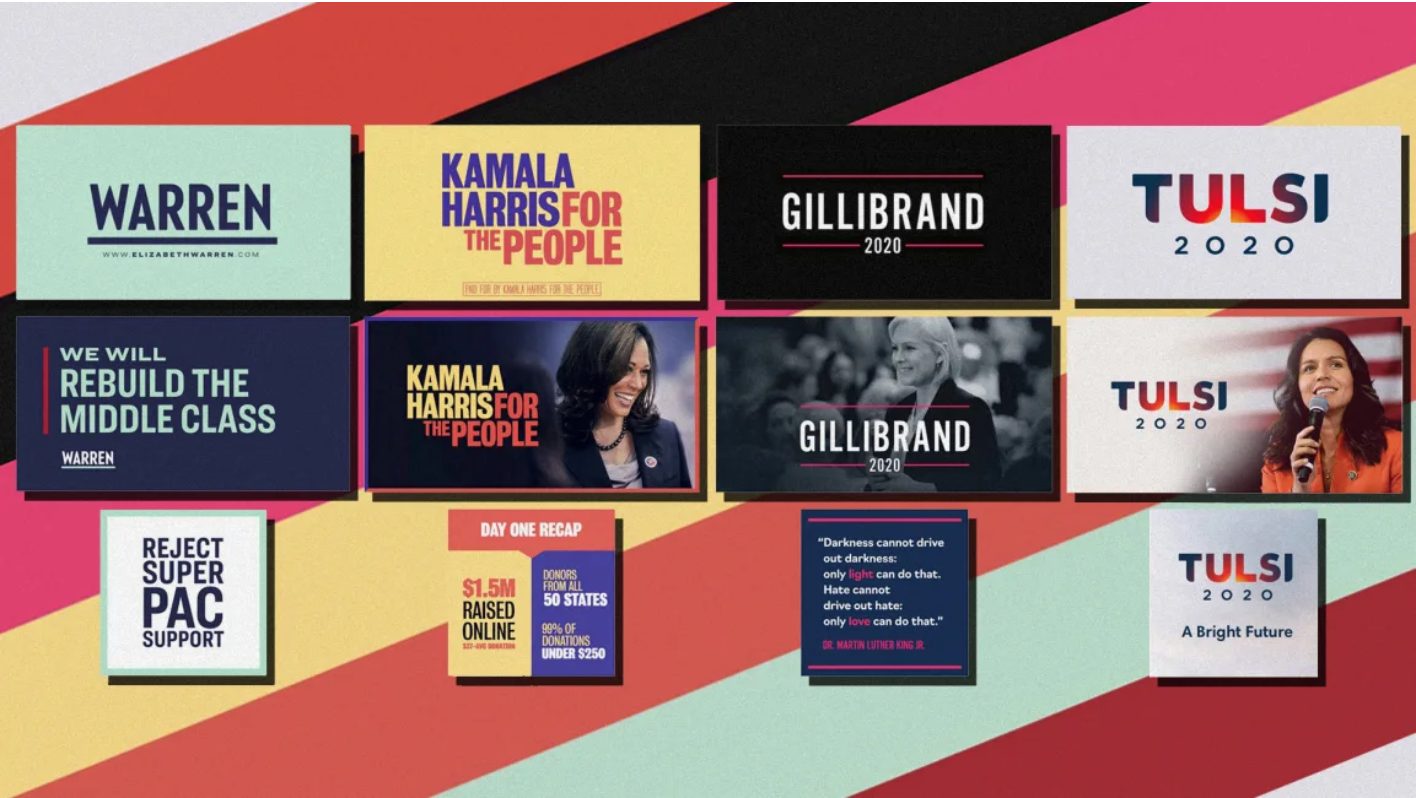Social addictions.
Nothing gets our inspiration flowing like a good, juicy blog post. Read about what we’ve been working on (our latest launches), what we can’t stop thinking about (design trends, industry happenings and new partnerships) and what we think you should know (expert branding insights and probably some stuff about dogs).
Check back often—we’re quite chatty when we want to be.
Color as Communication
You don’t hear Red, White and Blue and think, “Ah yes, France.” That’s a fact. You automatically think of the United States. Everyone thinks of the United States. Red, White and Blue has been our color palette since the American flag first came onto the scene. However, our America is miles different from the America of the 1770s.
Despite current efforts to flatten the heterogeneity of our nation, our diversity shines through. We’re in an era where multiculturalism is celebrated and, more importantly, needed. So, why have presidential candidates of yore always stuck to using only Red, White, and Blue in their campaign like we need help remembering what our flag looks like?
Maybe a simple answer is: We weren’t ready for it. Please consult their brand specialists because that’s not our department.
Today, we have the most diverse batch of presidential candidates we’ve ever had. Female Democratic candidates are shaking things up: the political landscape, and yes, you guessed it, the political color palette.

These badass women use their brands (thus their colors) to celebrate their unique identities rather than conform to the classic Red, White and Blue. They have no rules to abide by because, well, unfortunately few precedents have been set.
Elizabeth Warren’s color scheme rings true to her academic activist vibe using traditional red and navy, but she threw in a spicy yet muted mint green to freshen things up.
Kamala Harris, who is of Jamaican and Indian heritage, uses a bright and colorful palette that sends the message of celebrating her unique heritage and multiculturalism in America. Plus, fun fact, the yellow is an homage to Shirly Chisolm’s campaign in the 70s during which she used a different tone of yellow.
Kirsten Gillibrand, known for her longstanding feminist activism, is using “pussy hat” pink to let us know that women’s rights are going to be a foundation for her campaign platform.
Tulsi Gabbard’s “Bright Future” slogan is visually represented by the bright orange in her palette. She also uses that orange to reiterate how important her Hawaiian heritage is to her personal identity and America’s identity.
By breaking out of the design color rut, these women redefine what patriotism means in an inclusive society. What we are seeing is authentic communication that highlights the fact that we are not a monolithic, homogenous society. We can see clearly now that the played-out-colors are gone. But, just how clearly are these women using their brands to build our trust? Hopefully, after the 2020 Presidential election we will be able to answer that question definitively.
Photo credit ( DEROY PERAZA )
